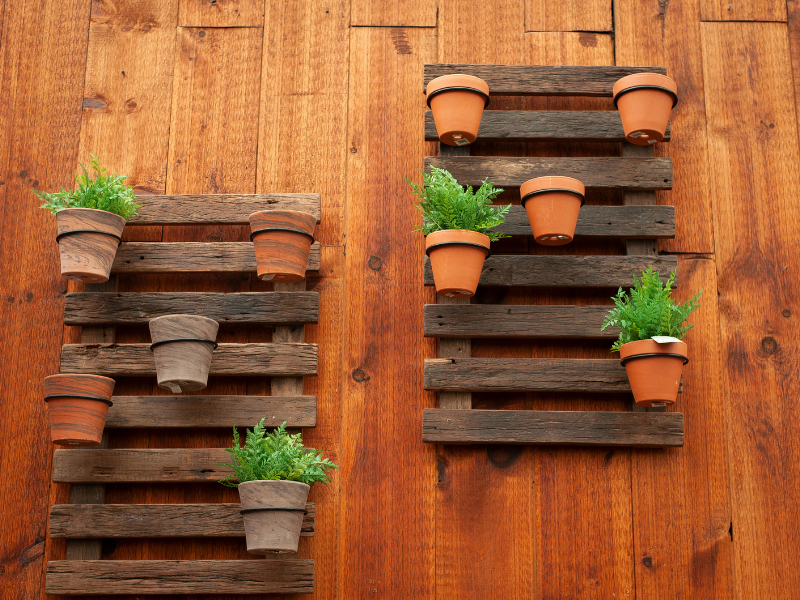This post explores unique and simple DIY planter projects you can easily recreate in your home.
Plants have this amazing way of turning any space into a fresh, vibrant oasis, don’t they? Whether it’s a lush monstera in the living room or a row of cheerful succulents on the windowsill, adding greenery instantly breathes life into your home.
But why settle for ordinary pots when you can create something uniquely yours?
If you’re ready to take your plant game up a notch, these 17 DIY planter projects are the perfect way to do it. Whether you’re a DIY newbie or a seasoned crafter, these planters are simple, fun, and totally customizable.
From upcycled containers to hand-painted pots, you’ll find something here to suit every style and space.
So, grab your favorite plants, roll up your sleeves, and let’s get creative with these easy planter ideas that will make your home (and your plants) shine!
17 easy DIY Planter projects for the home
1. Painted Terracotta Pots
Terracotta pots are a classic option for planting, but they can sometimes feel a little plain. With a bit of paint, though, you can transform these basic pots into custom works of art that match your home’s aesthetic.
Start with clean terracotta pots and choose acrylic paints in your desired colors. Use painter’s tape to create crisp lines for stripes or geometric patterns, or freehand designs like flowers, leaves, or polka dots.
You can also experiment with trendy techniques like color-blocking or ombré gradients. Once your design is complete, let the paint dry and apply a coat of clear sealant to protect it from the elements.
These personalized pots are great for both indoor and outdoor use and make lovely gifts for plant lovers.
2. Mason Jar Planters
Mason jars are a versatile and popular choice for DIY projects, and they make charming, rustic planters for small plants like succulents or herbs.
To make a mason jar planter, start by painting the outside of the jar with chalk paint or leaving it clear for a minimalist look.
Add decorative touches like twine or ribbon around the neck of the jar for added charm. For drainage, place a layer of small pebbles or stones at the bottom before filling the jar with potting soil and your plant.
These planters are perfect for placing on windowsills, counters, or hanging from hooks, making them a great way to bring greenery into small spaces.
3. Hanging Macramé Planters
Macramé has made a major comeback in home decor, and creating your own hanging macramé planter is easier than you might think. You’ll need macramé cord, scissors, and a pot to hang.
Start by cutting several equal lengths of cord (about four to six pieces), then tie them together at the top to create a loop for hanging.
From there, divide the cords into pairs and knot them at intervals, creating a net-like structure that will hold the pot.
Once you’ve knotted enough to fit the pot securely, tie the cords together at the bottom. You can customize the look by using different knotting patterns or adding beads.
Macramé hanging planters are perfect for showcasing trailing plants like pothos or spider plants and bring a boho vibe to any space.
4. Upcycled Tin Can Planters
Instead of throwing away empty tin cans, upcycle them into stylish and functional planters. Start by removing any labels and cleaning the cans thoroughly.
You can paint the cans in your favorite colors, wrap them in fabric or twine, or even decoupage them with decorative paper. For a rustic, industrial look, leave the cans as is and let their metal shine.
Before planting, punch a few holes in the bottom of each can for drainage, then fill with potting soil and your plants of choice.
Tin can planters are great for herbs, small flowers, or succulents, and they look charming on windowsills or outdoor patios.
5. Concrete Planters
Concrete planters add a sleek, modern touch to any home and are surprisingly easy to make. To start, mix concrete according to the package instructions and pour it into a mold—plastic containers, silicone molds, or even old yogurt cups work well.
For a drainage hole, place a straw in the center of the mold while the concrete is still wet. Let the concrete set for 24-48 hours, then remove the mold and sand down any rough edges.
You can leave the planter plain for an industrial look or paint it with metallics, pastels, or bold colors to suit your style.
These planters are durable and perfect for both indoor and outdoor use, making them ideal for larger plants or succulents.
6. Wooden Crate Planter Box
A wooden crate planter box is a great way to display multiple plants together in one decorative container. You can either buy a pre-made crate or build one from scratch using wooden slats.
Once you have your crate, sand it down and either stain or paint it to your desired finish. Line the inside of the crate with plastic or landscape fabric to protect the wood from moisture.
Then, place small potted plants inside the crate, or fill it with soil and plant directly into the box. This type of planter is versatile and works well for herbs, flowers, or succulents.
It’s a charming addition to any home and looks great on patios, in gardens, or even indoors.
7. Repurposed Teacup Planters
Repurposing old or mismatched teacups into planters is a whimsical way to bring charm and elegance into your home. Simply choose teacups that you no longer use or find vintage ones at a thrift store.
These small planters are perfect for succulents, cacti, or small flowering plants. If you plan to use the teacups indoors and don’t want to drill holes for drainage, add a layer of pebbles or small rocks at the bottom before adding soil and planting.
Teacup planters make great gifts and can add a playful touch to your kitchen, dining room, or living room decor.
8. Chalkboard Planters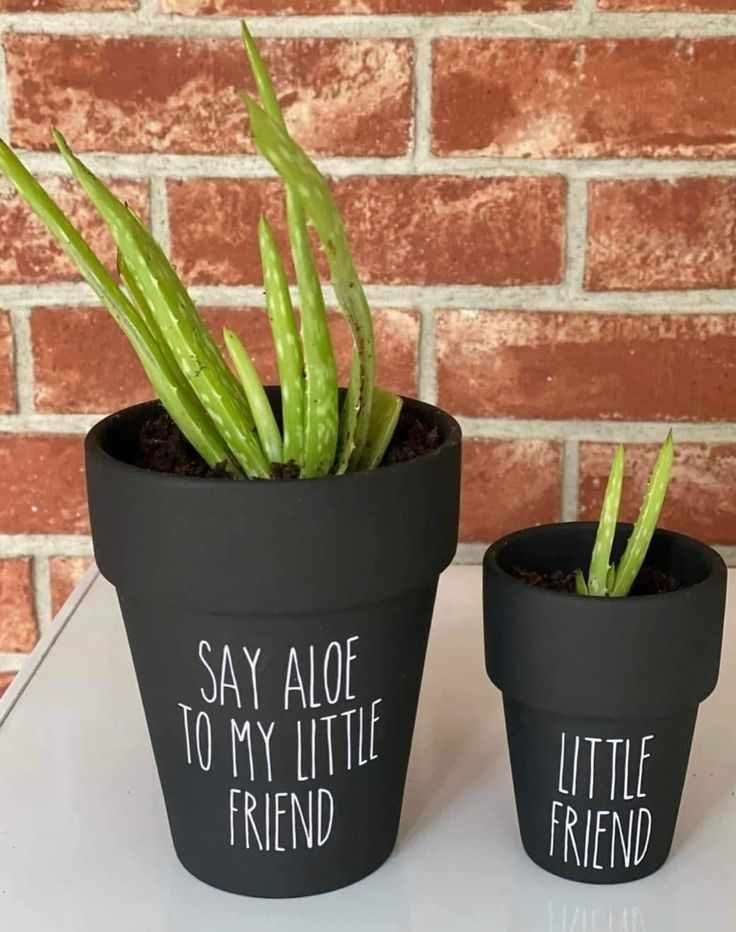
Chalkboard planters are both fun and functional, allowing you to label your plants or write little messages directly on the pots. Start by choosing plain ceramic or terracotta pots, then paint the outside with chalkboard paint.
You can paint the entire surface or just a section, depending on your style. Once the paint is dry, use chalk to label your herbs, write fun messages, or create temporary designs.
These planters are perfect for herb gardens or kitchens where you can easily change the labels based on what’s growing.
9. DIY Pallet Planter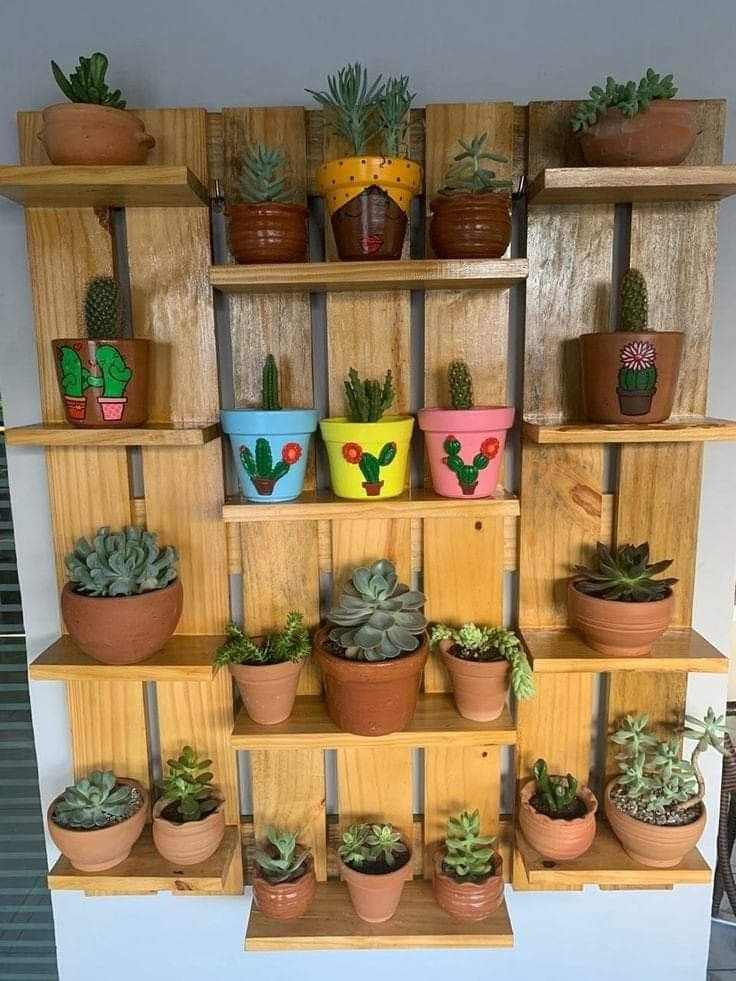
A wooden pallet can be repurposed into a vertical garden, making it perfect for small spaces or balconies. Start by sanding the pallet to remove any rough edges.
You can leave it natural or paint it to match your decor. Attach small pots or plant boxes to the pallet using hooks or screws, and fill them with herbs, flowers, or succulents.
The vertical arrangement saves space while adding a lush, green touch to your outdoor (or even indoor) area. This DIY planter is perfect for growing a variety of plants in a compact space.
10. Geometric Hanging Planter
For a sleek, modern touch, try making a geometric hanging planter using copper or brass tubing. You can create a geometric frame by cutting the tubing into equal lengths and connecting them with strong wire or small metal connectors to form a cube or prism shape.
Once your structure is built, place a small potted plant in the center and hang the planter from the ceiling or in front of a window.
The clean lines of the geometric frame provide an architectural look that pairs perfectly with minimalist decor and succulents or air plants.
11. Plastic Bottle Planters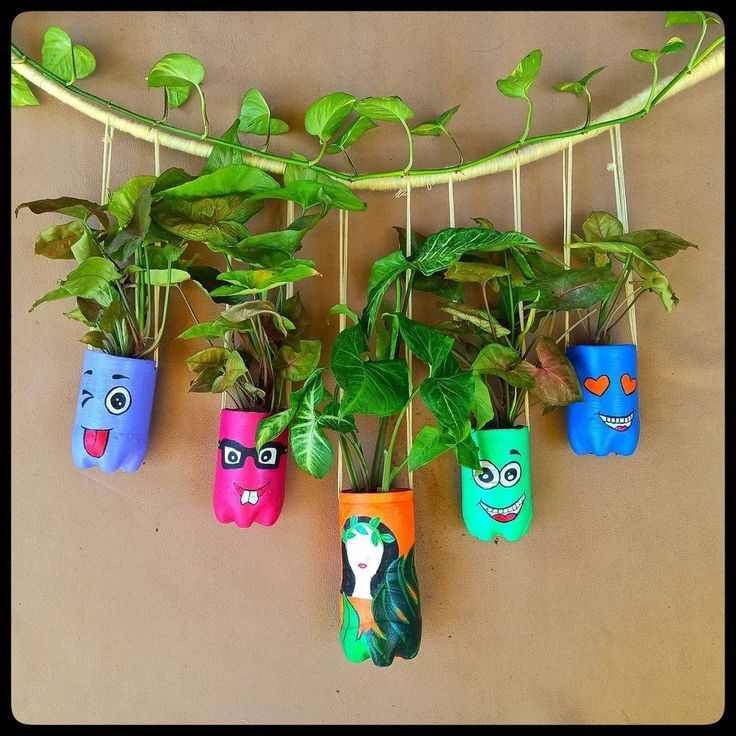
Recycling plastic bottles into planters is an eco-friendly project that helps reduce waste while giving you unique plant containers. Start by cutting a plastic bottle in half, and use the bottom portion as the planter.
Decorate the bottle with paint, stickers, or even fabric for a fun and colorful look. Punch holes in the bottom for drainage and fill the planter with soil and your chosen plants.
These DIY planters are great for growing small herbs or flowers, and you can hang them by attaching strings to the sides, making them perfect for vertical gardening.
12. Terrarium Planter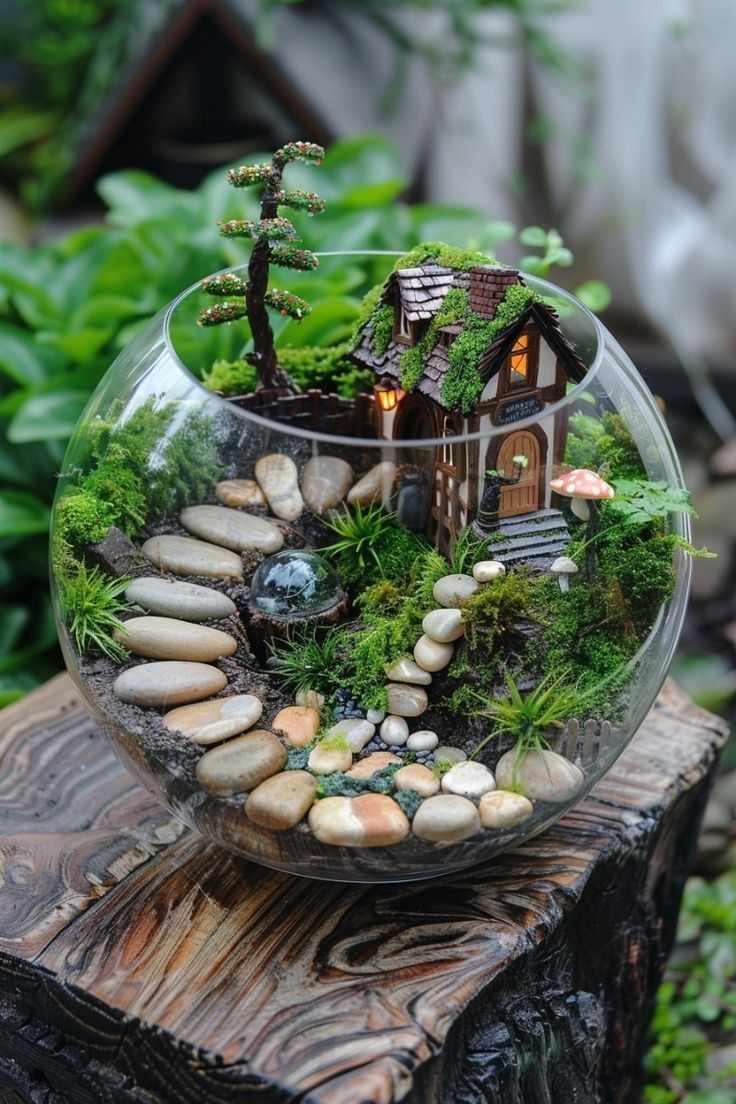
Terrariums are a beautiful way to display plants in a controlled environment, and they’re surprisingly easy to make. Choose a glass container like a jar, fishbowl, or vase. Start by adding a layer of small pebbles or rocks at the bottom for drainage, followed by a thin layer of activated charcoal to keep the soil fresh. Then, add a layer of potting soil and arrange your plants—succulents and air plants work best in terrariums. You can also add decorative elements like moss, small figurines, or colorful stones to personalize your terrarium. These self-contained gardens are low-maintenance and make for stunning decor pieces in any room.
13. Drawer Planter
Give an old dresser drawer new life by turning it into a planter box. Remove the drawer from the dresser and clean it thoroughly. You can paint or stain the drawer to suit your style, or leave it distressed for a shabby chic look.
Line the inside with plastic or landscape fabric to protect the wood, then fill the drawer with soil and your choice of plants.
This type of planter looks great in outdoor spaces like patios or porches and adds a rustic, vintage feel to your home decor.
14. Cinder Block Planter
Cinder blocks are an affordable and modern way to create a planter display with a unique architectural aesthetic. Simply stack the blocks in any configuration you like, leaving the holes exposed for planting.
You can arrange the blocks in a straight line, pyramid, or staggered pattern. Fill the holes with soil and plant succulents, small flowers, or herbs inside.
The industrial look of the cinder blocks contrasts beautifully with lush greenery, making these planters a striking addition to any garden or patio.
15. Colander Hanging Planter
Turn an old or unused colander into a quirky and functional hanging planter. The holes in the colander provide natural drainage for the plants, making it ideal for outdoor use.
Simply line the colander with a bit of landscape fabric to hold the soil, then plant your favorite flowers or herbs inside. Attach chains or rope to the handles of the colander and hang it from a sturdy hook.
This playful planter is perfect for kitchens, porches, or balconies, adding a touch of fun and creativity to your space.
16. Wine Cork Planters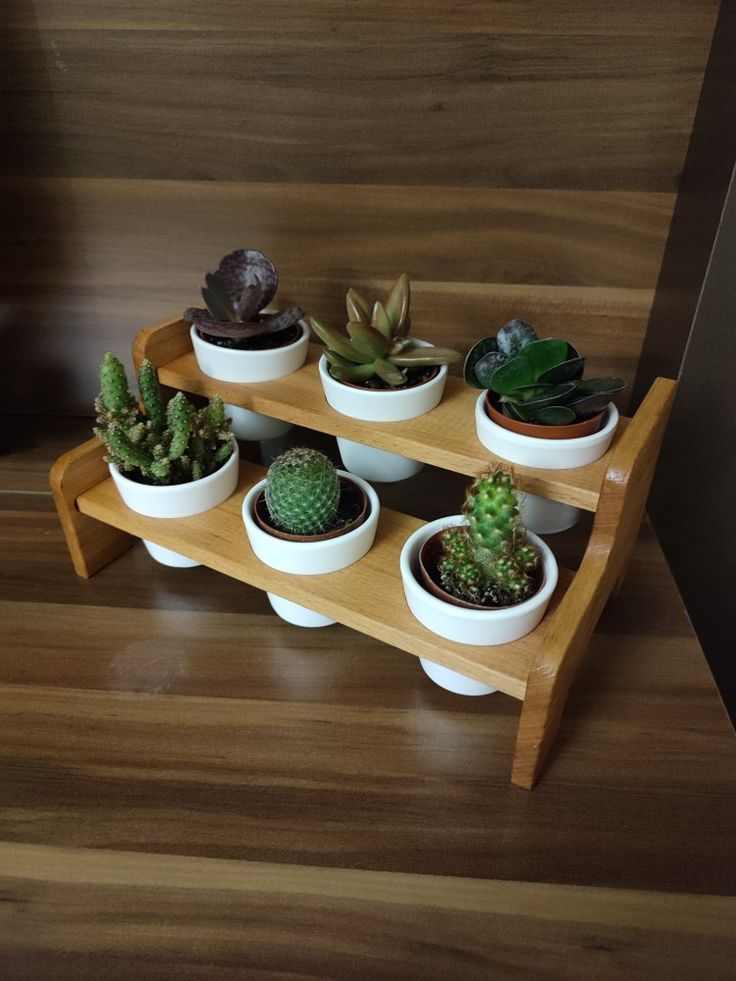
For a cute and tiny planter project, turn wine corks into mini planters for succulents. Use a small knife or drill to hollow out the center of each cork, leaving a cavity large enough for a bit of soil and a small succulent or air plant.
Once your corks are planted, attach magnets to the back, and stick them to your fridge or any magnetic surface. These tiny planters are an adorable way to add greenery to your home without taking up much space.
17. Log Planter
A log planter is a beautiful, rustic way to showcase plants, especially if you’re looking for something that blends seamlessly into outdoor environments.
To make one, find a fallen log or a piece of driftwood with enough width to hollow out. Use a chisel or drill to create a long, shallow cavity in the log, then line it with landscape fabric to prevent the wood from rotting.
Fill the cavity with soil and plant succulents, moss, or other hardy plants inside. This type of planter makes a stunning centerpiece for outdoor tables or garden areas and adds a natural, earthy feel to your decor.
You may also like:
